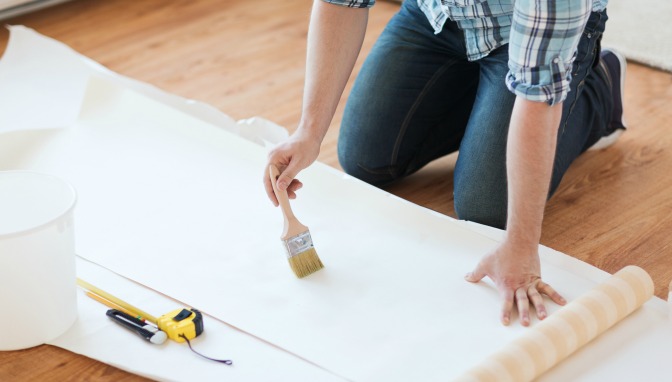When making decisions about upgrading a home, it can be tough to know what you should pay a professional to do and what you can handle yourself.
While you probably already know it’s best to leave electrical or structural changes to the professionals, what about the actual look of a home? Read on for suggestions about what home décor your clients can DIY and what they should pay a professional to do!
 Paint and wallpaper mistakes are easily fixed, and while it can definitely be time-consuming to do a large room or the whole house, it’s something your clients can work away on and feel great about the finished result.
Paint and wallpaper mistakes are easily fixed, and while it can definitely be time-consuming to do a large room or the whole house, it’s something your clients can work away on and feel great about the finished result.


Painting/Wallpapering: DIY
Switching up wall colors or patterns is definitely something many clients can tackle on their own, and have a lot of fun doing! From picking out the perfect shades, to draping furniture, and actually applying the paint or paper, many clients will enjoy going through the process and will be able to handle the work. Paint and wallpaper mistakes are easily fixed, and while it can definitely be time-consuming to do a large room or the whole house, it’s something your clients can work away on and feel great about the finished result.
Paint and wallpaper mistakes are easily fixed, and while it can definitely be time-consuming to do a large room or the whole house, it’s something your clients can work away on and feel great about the finished result.
Flooring: Don’t DIY
This depends on your clients’ skill set and flooring choice, but DIY floors is probably not the best idea for most clients. Ripping up carpet or floor boards is very time-consuming and materials are expensive. Even something seemingly simple, like refinishing hardwood flooring, can take way more time than expected and potentially dangerous for the inexperienced. If a mistake is made, it can just end up costing more in the long run than having hired a professional do it in the first place. Encourage your clients to play around with samples and shop for materials—you still want them to feel in control of the process! But leave the actual ripping and laying to someone with experience.Wall Art: DIY
This is definitely one home décor project clients can DIY and have a great time expressing their creativity and individuality! Even if your client isn’t the most artistic person around, there are lots of easy projects they can try that will look great and reflect their personal style. With the huge popularity of sites like Pinterest, many clients may already have a lot of fun ideas about how to personalize their home.
Encourage clients to work with colors, patterns, and textures they love, and share your own suggestions about what would fit best into the design and theme of each room. Whether they decide to create a painting, blow up favorite photos, or frame beautiful wallpaper designs, there are tons of easy ways to create great art that doesn’t require a large budget (or skill set!).

Counters and Cabinets: It depends!
We all know that super handy couple who has replaced their countertops, added new cabinetry and applied a backsplash on their own. Whether that’s your client or not, it just depends! There are tons of great tips available online for how you can renovate a kitchen or bathroom on your own, but if it goes wrong it can go very wrong. If your clients are set on upgrading the kitchen themselves, suggest that they stick to less permanent changes: painting cupboards instead of replacing them or getting adhesive tiles for a backsplash. These upgrades are pretty easy to pull off and will still give your clients the pride of knowing they did the work themselves, without the risk of crooked countertops or uneven cupboards!
